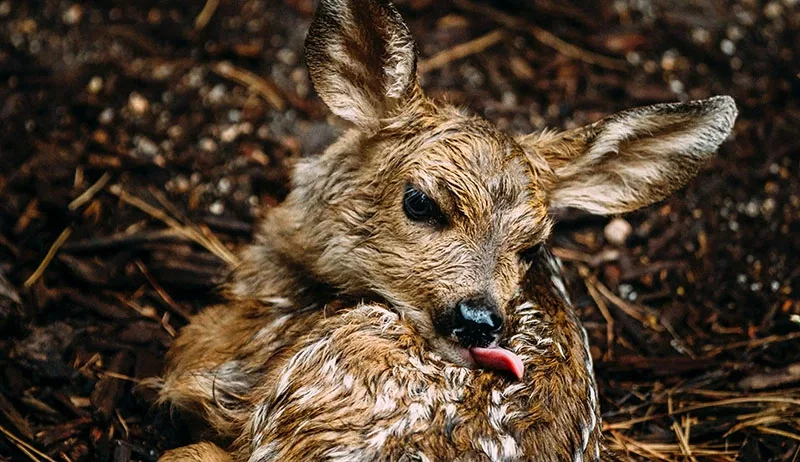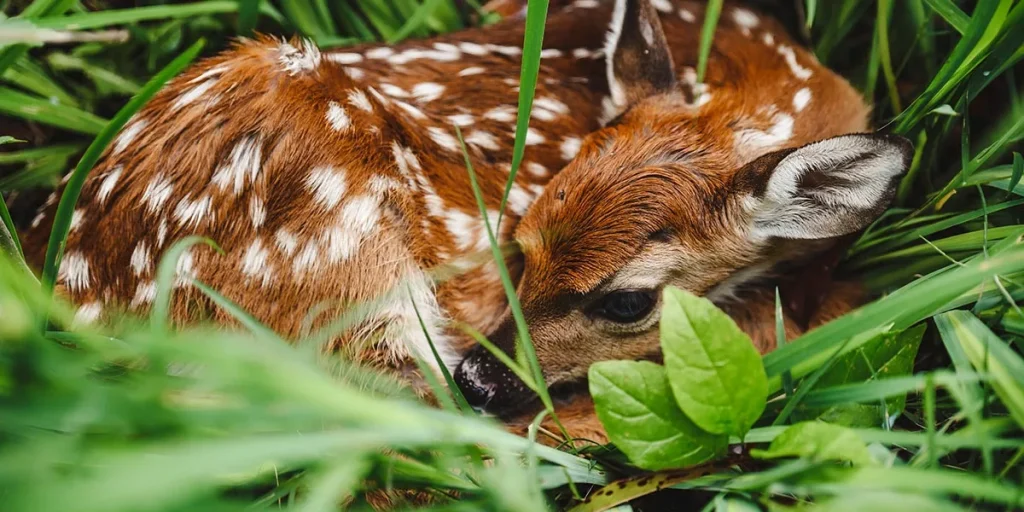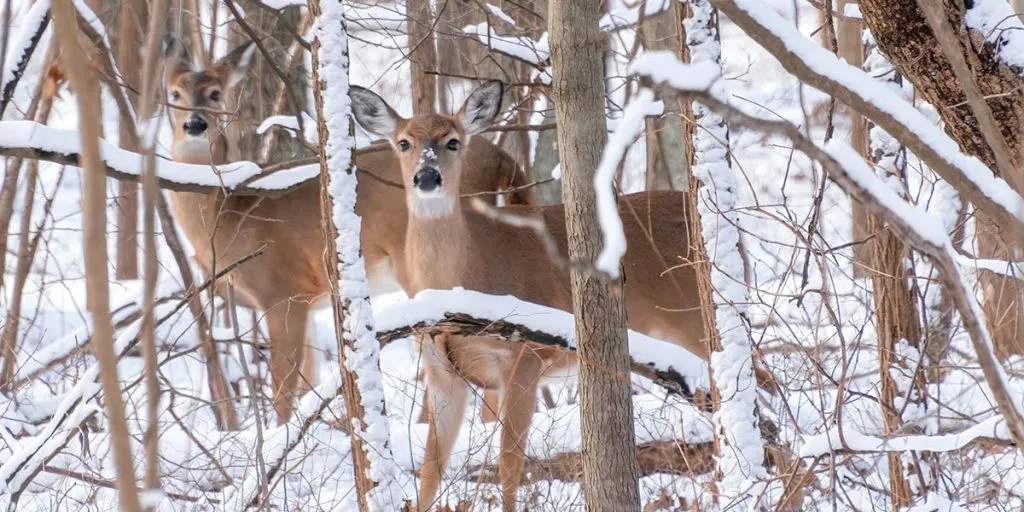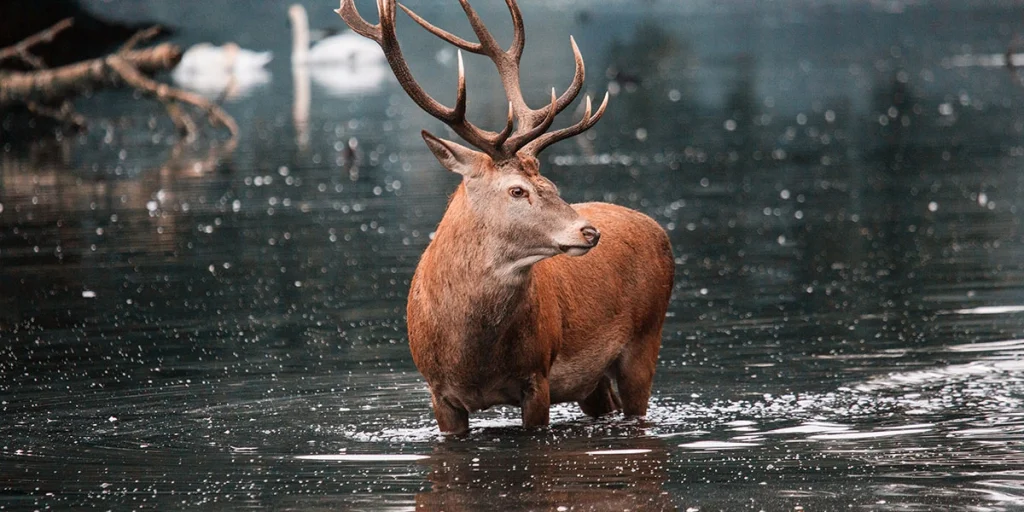Have you ever noticed that baby deer always seem to have white spots across their entire fur? The beautiful dots have an important role to play in the survival of newborn fawns.
All newborn baby deer are born with white spots on their fur to help them camouflage from potential predators. White spots contrast with brown fur, allowing the fawn to blend in with the vegetation by breaking up their visual pattern.
Remember that most predators do not see color in the same way humans do. Especially in sunlight, the dotted color pattern of a baby deer will be very hard to distinguish. Together with the fawn’s ability to lie very still, it’s like trying to spot a needle in a haystack.
White Deer Spots Provide Camouflage
Imagine a sunny day, and a fawn peacefully sleeping in the tall grass. Mother deer have left her offspring to feed, and the newborn is helpless against potential threats. Deer have many potential predators, and one is scanning the field for possible fawns.
With the sun shimmering through the vegetation right onto the baby deer, the lurking predator is unable to distinguish it from the surroundings. The spots on his fur might as well be sunlight filtering through the leaves.
This is exactly the strength of the white spots on the brown fur of a fawn — it blends in perfectly with its environment. The brown coat of the baby deer doesn’t stick out. The predator is mostly colorblind, and can only see the light differences. It is sufficient for the fawn to survive the threat.
Fawns Are Natural ‘Hiders’
Baby deer are natural-born hiders, they know exactly how to remain as still as possible. Their instinct tells them to curl up, hide, and remain still when a threat is nearby. Together with the spotted pattern on their fur, this makes blending in with the background easier.
It allows the mother deer to leave her (mostly helpless) offspring to forage for food, while leaving one or more fawns in her litter behind.
The hiding behavior isn’t always successful. Plenty of fawns get eaten by predators, or humans will find them on their forest walk. Leaving baby deer alone is the best response to finding a healthy hiding fawn in nature.

Mom Keeps Baby Deer Scent-Free
There’s one more strategy that helps a hidden fawn survive. Some people might think the spots on the baby deer’s fur are filth or poop spots. But there’s actually a very low chance you will ever find feces near a baby deer.
Mother deer actually consume the excrements of their fawns and keep them clean systematically. They don’t eat the poop and pee of their fawns for fun, but to further increase their odds of survival.
Predators don’t just hunt using their vision (for which the white spots are a perfect camouflage), but will mainly use scent to guide them around. By consuming their feces, mother deer help their fawns to remove all scents and naturally remain largely scent-free.
Fawns Lose Their Spots Over Time
As soon as baby deer are able to escape their natural predators, the need for camouflage reduces. Growing up and being able to escape potential threats, fawns will lose their white spots around 3-4 months after birth.
White spots can actually be a drawback for adult deer, because they make the animals stand out against the background of their diverse habitat. Fawns lie down and hide in the grass a lot, which is a better-suited environment for dotted camouflage.
However, not all deer lose their spots when they grow older. Fallow deer are known to keep their spots into adulthood, and so can Red deer. The Chital, a species native to India, is even known as ‘the spotted deer‘, and will also keep its white markings into adulthood. While relatively unknown in the west, Chitals are not an endangered deer species.
Not All Deer Species Have Spots
White-tailed deer are the first species of deer that come to mind when thinking about spotted fawns. But not all species on the North American continent will have the characteristic white spots at birth.
Unlike other deer species, baby moose do not have the characteristic white spots at birth. The same is true for reindeer, which are also lacking white spots on their dark fur upon birth.
To end on a nostalgic note — the iconic Bambi in the equally named Disney movie classic does have white spots. We can therefore conclude by her spotted fur, that Bambi is merely a fawn younger than 3 to 4 months of age. And we can for sure say that she isn’t a moose or reindeer!



